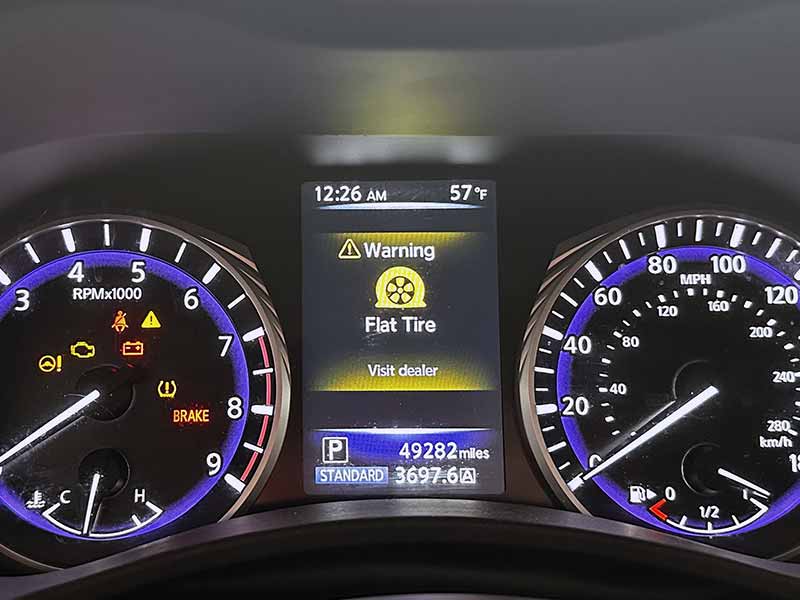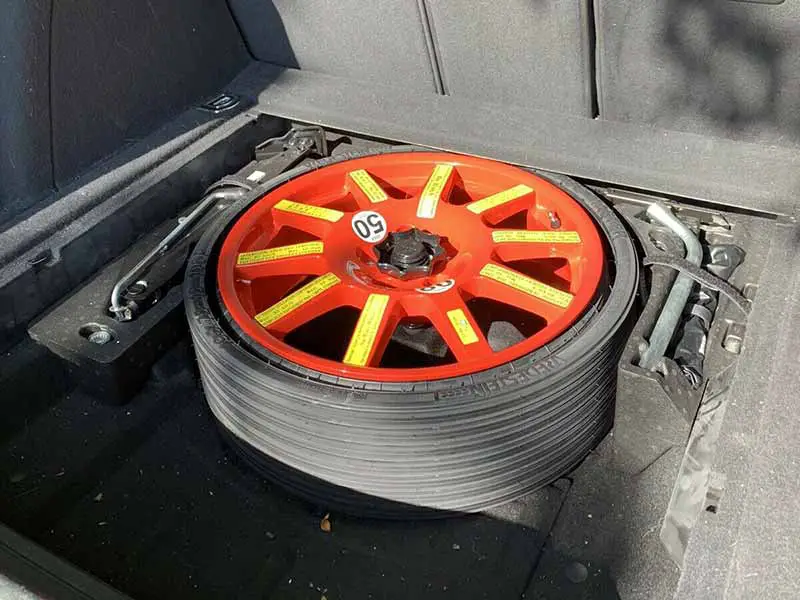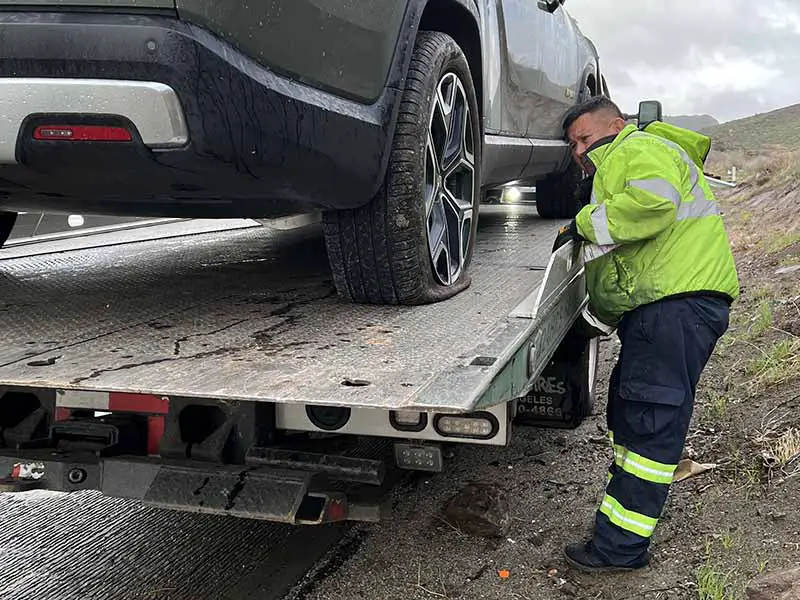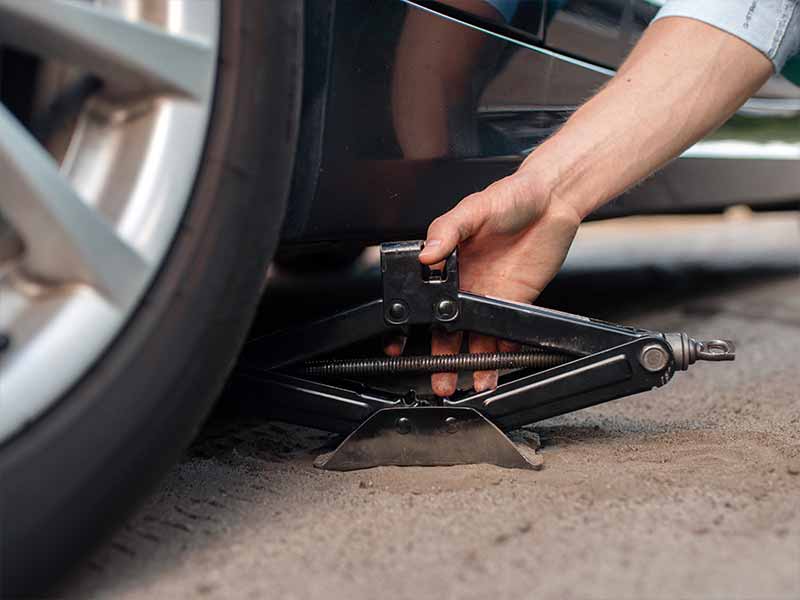Have you ever been cruising down the highway, only to suddenly feel the dreaded thud and wobble of a flat tire? Now imagine driving on without a care, thanks to the magic of run flat tires. But is making the switch from your regular tires to run flats the right move for you?
Switching From Run Flats To Regular Tires
Switching from run flat tires to regular tires can present challenges such as ensuring the vehicle’s compatibility, anticipating the absence of a spare tire in emergencies, and adjusting to potential changes in ride comfort.
Precautions include consulting with tire experts before making a switch and regularly monitoring tire health. It’s also essential to be prepared for situations like roadside punctures, especially if transitioning away from the safety net of run flats.
In this article, we’ll delve deep into the world of run flat and regular tires, comparing their pros and cons, understanding why certain car brands prefer one over the other, and addressing common questions about making the switch.
Let’s take a closer look.
The Great Debate: Run Flat vs. Normal Tires
When it comes to choosing between run flat and normal (or conventional) tires, there’s a lot to consider. Both types have their own sets of advantages and disadvantages. Let’s break down the key differences and factors to consider when making a choice.
Advantages of Run Flats
- Safety on Puncture: Run flats allow drivers to maintain control of their vehicle even after a puncture, reducing the risk of accidents.
- Drive After Deflation: Even after losing air pressure, run flat tires can be driven for a limited distance, usually between 50 to 100 miles, at reduced speeds.
- No Need for Immediate Tire Change: Drivers can avoid the immediate need to change a tire in potentially dangerous or inconvenient locations.
- Space Saving: Vehicles equipped with run flats often don’t require a spare tire, freeing up trunk space.
Advantages of Normal Tires
- Cost-Effective: Conventional tires are generally less expensive than run flat tires, both in initial purchase and in potential repair scenarios.
- Ride Comfort: Many drivers find that conventional tires offer a softer and more comfortable ride compared to the stiffer sidewalls of run flats.
- Wider Selection: There’s a broader range of conventional tires available in the market, offering more choices in terms of brand, tread patterns, and price points.
- Potential for Repair: Some punctures in conventional tires can be repaired, whereas run flats often require replacement.
Factors to Consider When Choosing
- Driving Conditions: Consider where and how you typically drive. If you often drive in remote areas or on highways, the safety features of run flats might be more appealing.
- Budget: Run flats can be more expensive, not just in initial cost but also in replacement scenarios. It’s essential to factor in both short-term and long-term costs.
- Vehicle Specifications: Some vehicles are specifically designed to be equipped with run flats. Always refer to the vehicle’s manual or consult with the manufacturer.
- Personal Preference: Some drivers prioritize ride comfort, while others might prioritize safety features. It’s essential to consider what matters most to you.

What To Do When You Get A Flat?
Experiencing a flat tire while driving can be a daunting experience. Whether you have conventional or run flat tires, it’s crucial to know the steps to take to ensure your safety and address the situation effectively.
Immediate Steps to Take
- Stay Calm: Panicking can make the situation worse. Take a deep breath and focus on maintaining control of your vehicle.
- Slow Down Gradually: Avoid slamming on the brakes. Instead, reduce your speed slowly and steadily.
- Turn On Your Hazard Lights: This alerts other drivers that there’s an issue and they should proceed with caution around your vehicle.
- Move to a Safe Location: If possible, steer your vehicle to the side of the road, away from traffic. If you’re on a highway, try to reach an exit or a rest area.
If You Have Conventional Tires
- Assess the Situation: Before deciding to change the tire yourself, ensure you’re in a safe location and have the necessary tools (jack, wrench, spare tire).
- Changing the Tire: If you’re comfortable doing so and are in a safe location, you can proceed to change the tire. Always refer to your vehicle’s manual for specific instructions.
- Seeking Assistance: If you’re unsure about changing the tire yourself or are in an unsafe location, it’s best to call for roadside assistance or a tow.
If You Have Run Flat Tires
- Drive Carefully: Remember that you can continue driving on a run flat tire for a limited distance (typically 50 to 100 miles) at reduced speeds (usually up to 50 mph).
- Seek a Tire Shop: Use this limited driving range to reach a nearby tire shop or service center. It’s essential to have the tire inspected and replaced if necessary.
- Avoid Extended Driving: Driving beyond the recommended distance or speed on a punctured run flat tire can cause further damage and compromise safety.
After the Incident
- Tire Inspection: Whether you’ve replaced the tire yourself or had it done at a shop, it’s a good idea to have all your tires inspected to ensure they’re in good condition.
- Review and Learn: Reflect on the incident and consider if there are any lessons to be learned. For instance, regularly checking tire pressure and condition can help prevent some flat tire scenarios.

Why Do Some Car Brands Prefer Run Flats?
Run flats have gained popularity among several leading car manufacturers. Brands like BMW, Mercedes, and Infiniti have adopted run flat technology for various reasons, integrating them into many of their models. Let’s delve into the reasons behind this preference.
Safety First: Minimizing Roadside Risks
- Reduced Risk of Accidents: A sudden tire puncture can cause a vehicle to lose control, especially at high speeds. Run flat tires maintain their shape even after a puncture, allowing drivers to maintain control and safely pull over.
- Eliminating Roadside Tire Changes: Changing a tire on the side of a busy road can be dangerous. With run flats, drivers can continue driving to a safer location or a nearby tire shop, reducing the risk of roadside accidents.
Design and Performance Benefits
- Weight Reduction: Eliminating the need for a spare tire and jack can reduce a vehicle’s weight. This weight reduction can lead to improved fuel efficiency and performance.
- Increased Storage Space: Without a spare tire, car manufacturers can design vehicles with more trunk space or use the freed-up space for other features, such as larger fuel tanks or additional storage compartments.
- Optimized Vehicle Design: Some car models, especially sporty or luxury ones, have designs that don’t easily accommodate a spare tire. Run flats offer a solution, allowing for sleeker and more aerodynamic designs.
Brand Image and Customer Experience
- Premium Feel: Offering run flat tires can enhance a brand’s image, positioning it as prioritizing safety, innovation, and convenience.
- Peace of Mind: Knowing that they can continue driving even after a puncture can provide drivers with added peace of mind, enhancing their overall driving experience.
Considerations for Car Brands
- Cost Implications: Integrating run flats can increase the vehicle’s overall cost. Brands need to weigh the benefits against the potential price increase and how it might affect sales.
- Customer Feedback: Some drivers prefer the traditional feel and performance of conventional tires. Brands must consider customer preferences and feedback when deciding to adopt run flat technology widely.

What Are Run Flat Tires?
Run flats, often referred to simply as “run flats,” are a specialized type of tire designed to maintain their shape and function even after suffering a puncture. Unlike conventional tires, which can go flat and become unrideable after a puncture, run flats can continue to be driven on for a limited distance. This unique feature provides drivers with added safety and convenience.
Key Features of Run Flats
- Self-Supporting Structure: The primary feature that distinguishes run flat tires from regular ones is their reinforced sidewall. This structure allows the tire to support the vehicle’s weight even when the tire loses air pressure.
- Limited Driving Range: After a puncture, run flats can typically be driven for an additional 50 to 100 miles (depending on the tire and driving conditions) at a reduced speed, usually up to 50 mph. This gives drivers ample time to reach a safe location or a tire shop for repairs or replacement.
- No Need for a Spare: Vehicles equipped with run flat tires often don’t come with a spare tire. The rationale is that the run flat can serve as its own spare for a short duration, reducing vehicle weight and freeing up storage space.
Benefits of Using a Run Flat Tire
- Safety: One of the primary advantages of run flat tires is safety. If a conventional tire gets punctured at high speeds, it can lead to a sudden loss of control. With run flats, the risk is significantly reduced as they maintain their shape and allow for a controlled stop.
- Convenience: No need to change a tire on the side of a busy highway or in adverse weather conditions. The driver can continue to a more suitable location to address the issue.
- Space Saving: Without the need for a spare tire, vehicles can have more trunk space, and manufacturers can design more streamlined vehicles.
Considerations When Using a Run Flat Tire
- Tire Pressure Monitoring System (TPMS): Vehicles with run flat tires should be equipped with a TPMS. Since run flats can lose air and still appear normal, a TPMS will alert the driver to a loss of air pressure.
- Replacement Costs: It’s more expensive to replace run flat tires than regular tires if one is damaged beyond the ability to be repaired. Also, some punctures that could be repaired in regular tires might necessitate a full replacement for run flats.
- Ride Comfort: Some drivers find that run flat tires offer a firmer ride compared to conventional tires, which might affect ride comfort.
Resources
Below are some links you may find helpful when learning about tires
- Can I replace run flat tires with regular tires? – Firestone
- 5 reasons to ditch run flat tires for regular tires – Autoevolution
Final Thoughts
While run flat tires offer undeniable advantages in terms of safety and convenience after a puncture, they come with their own set of considerations, such as cost and ride feel. On the other hand, conventional tires, familiar to most, offer a broader range of choices and often a softer ride.
The decision to stick with or switch from one tire type to another is multifaceted, requiring a blend of personal preferences, budget considerations, and vehicle needs.
Good luck and happy motoring.




